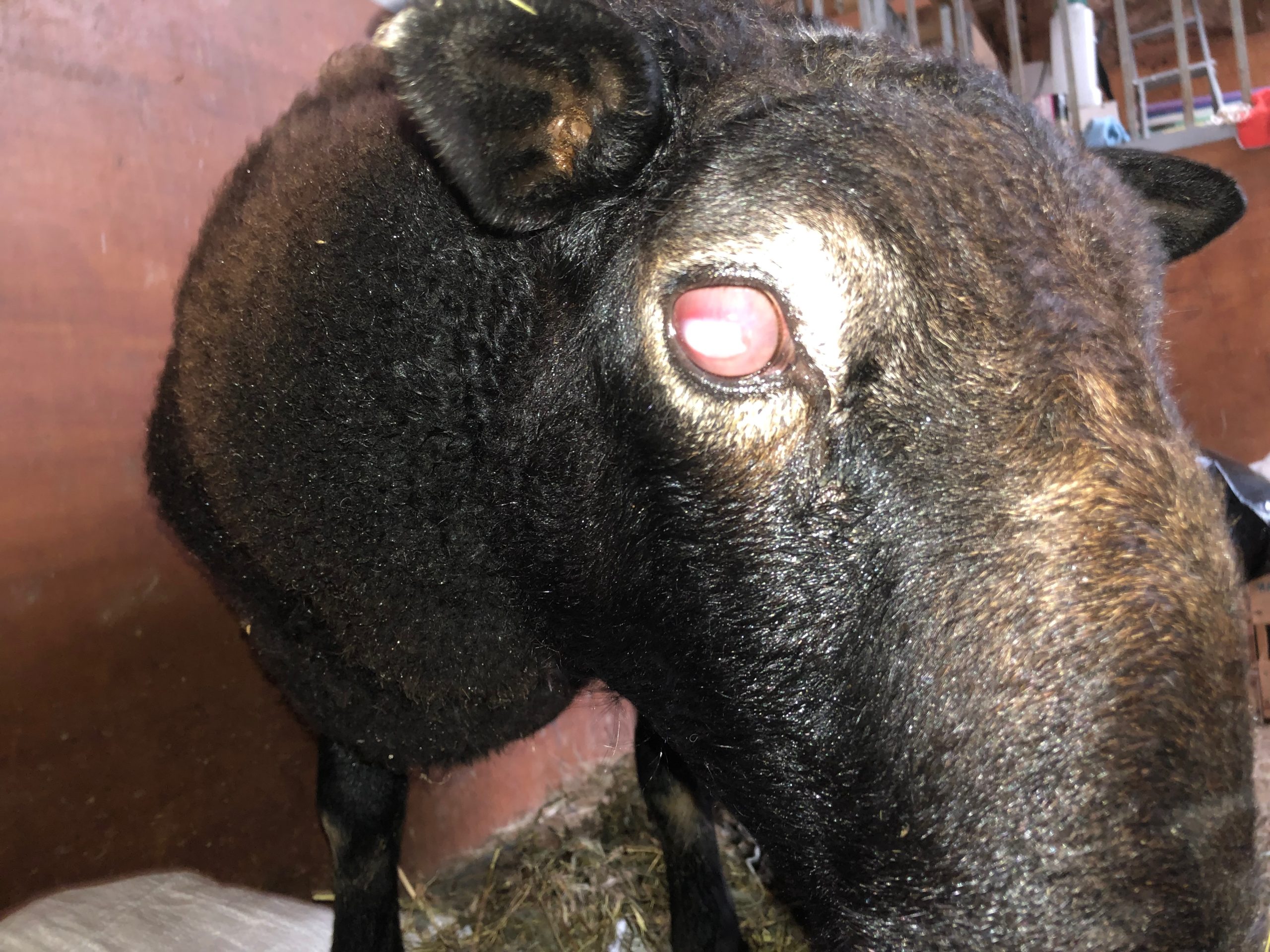
Keep an eye on your sheep at the moment… we are currently dealing with a spate of Pink Eye (Conjunctivitis) in our own flock!
Last year around this time we also got a spate of it because of the warm, damp weather causing bacteria to multiply and spread. We tried to leave it to run its course*, but we ended up with temporarily blinded ewes… and even a ram swimming around in the pond (yes, they can swim very well it turns out) after falling in because it couldn’t see where it was going!
This year we decided to contact our vet early and got some medicated eye ointment to control it before it got to the point of blindness. Our girls are tame enough that this task isn’t too hard to get them into the yards and catch them to get it under their eyelids.
The tell-tale signs for us to recognise it this year were:
- weeping and staining below the eyes
- lethargy and generally looking unhappy
- holding one, or both, eyes closed due to discomfort
* here’s the alternative, more risky option for dealing with it:
In most cases recovery commences within 3-4 days and is complete in 10-14 days although in some animals the cloudiness of the cornea may persist for several weeks or even permanently. Carrier animals are common where the Chlamydia organism persists well after an outbreak. It is thought more than 50% of recovered animals remain resistant for periods of up to a year.
Because recovery of the condition is quick and spontaneous in Chlamydia caused pinkeye, it is often questionable whether treatment and isolation of infected sheep is warranted.
VetEnt
Here are some more details about it to help you stay informed and aware of the issue so that you can catch it and manage it early if needed.
Pink Eye in Sheep
Pink eye is a common and contagious eye infection in sheep. It is caused by a bacterium called Mycoplasma conjunctivae, and can also be caused by Chlamydia. The infection can be mild or severe, and can lead to blindness if not treated.
Description
Pink eye is characterised by inflammation of the conjunctiva, the clear membrane that lines the eyelids and covers the white of the eye. The affected eye will be red, swollen, and watery. There may also be a discharge from the eye. In severe cases, the cornea (the clear front part of the eye) can become ulcerated, leading to blindness.
Clinical Signs and Diagnosis
The clinical signs of pink eye in sheep include:
- Red, swollen eyes
- Watery discharge from the eyes
- Squinting or holding the head to one side
- Sensitivity to light
- Loss of appetite
- Depression
If you see any of these signs in your sheep, it is important to consult with a veterinarian to confirm the diagnosis and get treatment started.
Treatment
The treatment for pink eye in sheep is usually a course of antibiotics. The specific antibiotic that is used will depend on the severity of the infection and the sensitivity of the bacteria. In addition to antibiotics, it is also important to keep the affected eye clean and free of discharge. This can be done by gently washing the eye with a mild soap and water solution.
Prevention
There are a number of things that can be done to prevent pink eye in sheep, including:
- Vaccination: There are vaccines available that can help to protect sheep from pink eye.
- Good hygiene: It is important to keep the sheep’s environment clean and free of flies.
- Quarantine: If you bring new sheep onto your farm, it is important to quarantine them for a period of time to make sure that they are not carrying pink eye.
Conclusion
Pink eye is a common and contagious eye infection in sheep. It is important to consult with a veterinarian if you see any of the clinical signs of pink eye in your sheep. Early treatment can help to prevent the infection from spreading and causing blindness.